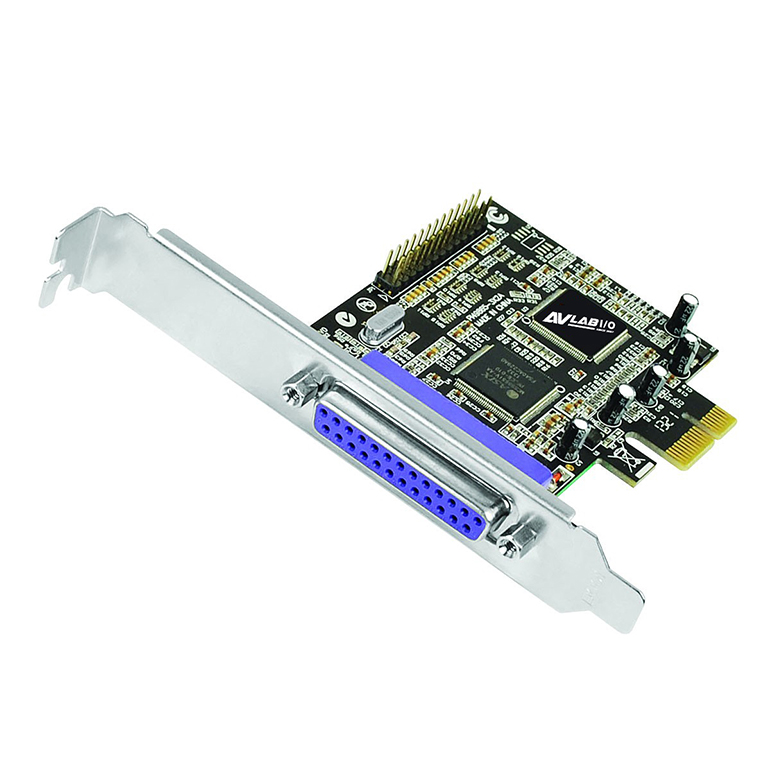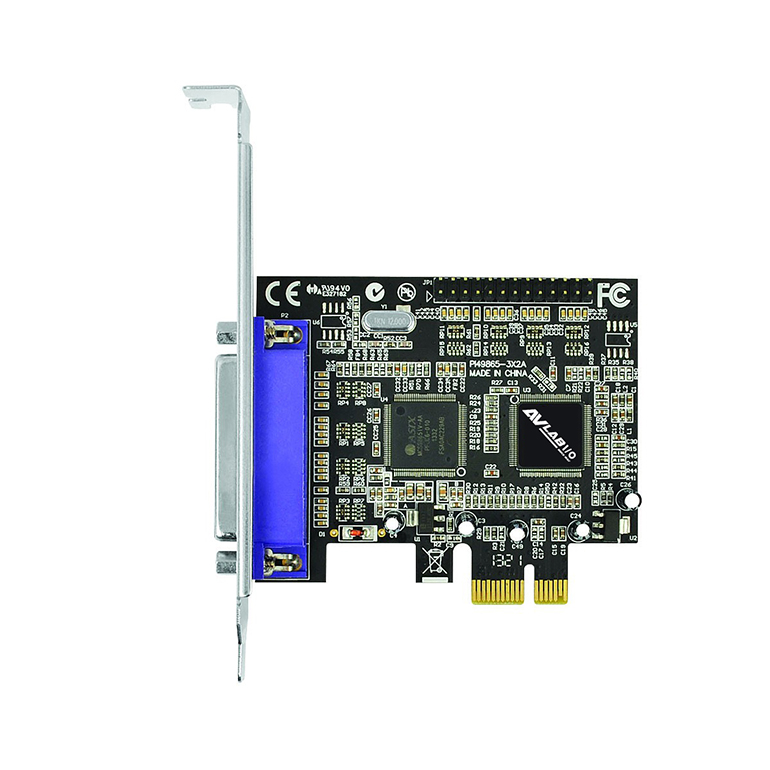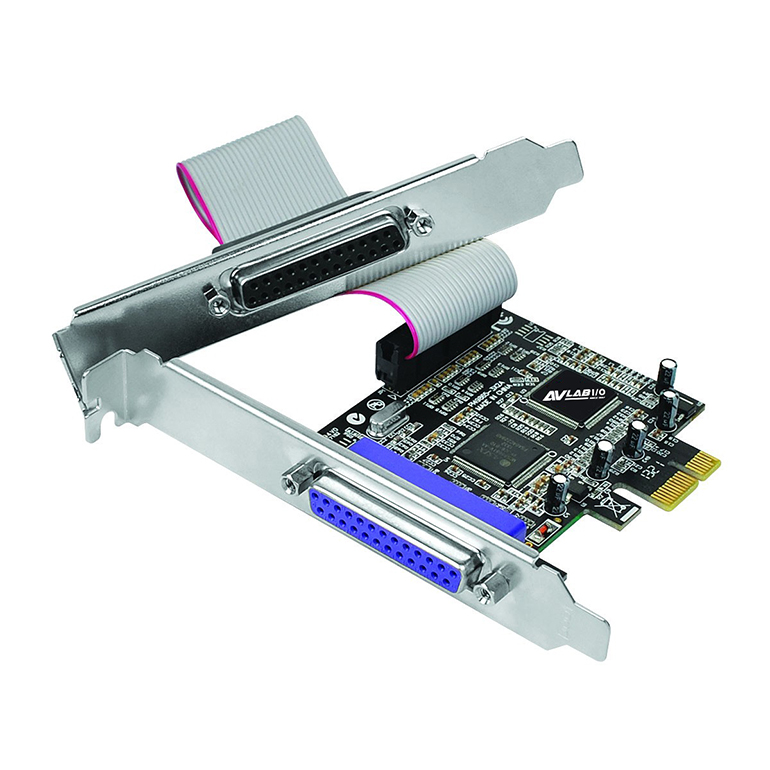- AVLAB-JJ15-1
- AVLAB 2-Port Parallel PCIe, ECP/EPP/SPP/PS2, DB25 Port, Dual Profile Bracket
■ Designed to add one DB 25-pin parallel port to your PCIe enabled desktop computer ■ ECP/EPP parallel port delivers data transfer rates of up to 1.5MB/s ■ Supports ECP, EPP, SPP parallel port modes ■ Dual profile works in any available PCI Express slots of different lane widths ■ Installs in standard height or low profile chassis with included brackets
產品詳情
EXPANSION
Add two high-speed parallel (DB25) ports to your PCI-Express enabled desktop
PARALLEL PORT MODES
Supports ECP, EPP, PS2 and SPP parallel port modes
HIGH SPEED DATA
Fast data rates up to 1.5 MB/s
PCI EXPRESS
1-lane (x1) PCI-Express adapter to work with all PCI-Express slots with different lane widths
DESIGNED FOR WINDOWS
Full support for Windows-based software and applications
FULL HEIGHT AND LOW PROFILE SUPPORT
Installs in full height and low profile chassis with included brackets
產品規格
Chipset: ASMedia ASM1083 + ASIX MCS9865
Compliant with PCI Express Base Specification revision 1.1
Bus connector: PCI Express 1-lane (x1)
Supports ECP/EPP/SPP/PS2 parallel port modes
Connectors: 2x Parallel, 25-pin, Female
Product
■ Dimensions: 3.62" (W) x 4.72" (H) x 0.79" (D)
■ Weight: 0.20 lbs
Environmental conditions
■ Operating temperature: 32 to 122 degrees F (0 to 50 degrees C)
■ Operating humidity: 20% to 80% RH (non-condensing)
■ Storage temperature: -4 to 140 degrees F (-20 to 60 degrees C)
■ Storage humidity: 10% to 90% RH (non-condensing)
Certifications/Standards: FCC, CE, RoHS
Warranty: Lifetime limited
Country of origin: China
FAQ
- How do I confirm that Windows detects my expansion card?
- To confirm that Windows detects your expansion card, complete the following: Press the Windows key+R, type devmgmt.msc, and press Enter. In Device Manager, under the appropriate heading, confirm that your expansion card is listed and that there isn't an exclamation mark next to it. For example, a RS-422/485 controller card would be under Ports (COM & LPT)
- How do I confirm that Windows detects my USB device?
- To confirm that Windows detects your USB device, complete the following: Press the Windows key+R, type devmgmt.msc, and press Enter. In Device Manager, under the appropriate heading, confirm that your expansion card is listed and that there isn't an exclamation mark next to it. For example, a USB device would be under Universal Serial Bus controllers.
- How can I make sure my serial port is working in Windows?
- To check whether or not an RS-232 serial port is working, perform an RS-232 loopback test by doing the following: If your serial port is not female, convert it by taking a female/female cable or gender changer and plugging it into the serial port. Take a metal paperclip or wire and cross pins 2 and 3. If you look closely at the female end, the pins should be numbered. Open a telnet session on the COM port number of the device that you are testing. Note: To open a telnet session on the COM port, you need a telnet client like PuTTY or Hyper Terminal. Windows XP comes with Hyper Terminal. When the session is open, anything you type into it you should see. The loopback test fails when you cannot see what you are typing. If the loopback test fails, make sure that the serial cable or gender changer that you are using works and that the adapter is in the correct port.







